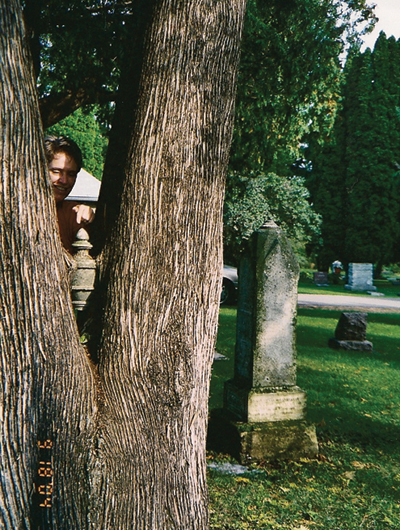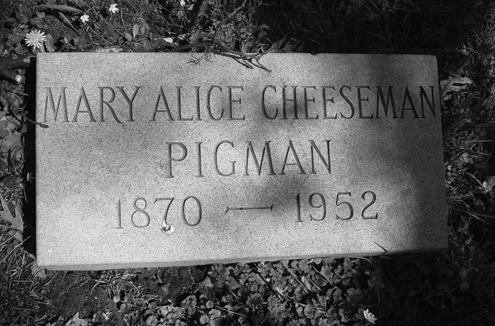Sign up for the Family Tree Newsletter Plus, you’ll receive our 10 Essential Genealogy Research Forms PDF as a special thank you!
Get Your Free Genealogy Forms
"*" indicates required fields
Noncensus: July Winners
Anyone who says genealogy isn’t funny hasn’t looked at enough census records. The readers who sent these chucklers will receive our Census Secrets CD to further their census research.
Is You Is?
My Southern great-great-grandfather, James Monroe Stafford, a Union Army volunteer, was captured and sent to the Andersonville prison. His pension application indicates scurvy and severe diarrhea left him with a chronic disability.
That apparently didn’t stifle his sense of humor: Family lore says that when the 1880 census-taker asked his name, he replied “My name is Bill — what’s yours?” The 1880 DeKalb County, Ala., census lists him as “Isbill Stafford.”
Peggy Fuller Paul, Olathe, Kan.
Girl Crazy
The enumerator for the 1860 census for Claridon, Geauga County, Ohio, apparently began his count at the poorhouse. All of the building’s 38 residents were categorized as “pauper,” and several were also listed as “insane.” One, Milton Fowler, age 46, a native of Connecticut, was given the poignant designation: “Love Struck — Insane.” One hundred fifty years later, one still feels his pain.
John Koot, Newton Highlands, Mass.
When the Shoe Fits …
While searching an Ohio 1850 census for my great-grandmother, I came across two entries that made me stop and laugh: One man was listed as “A Regular Jabber Jaw.” Another surname was “The Italian Family Across The Creek.” I never did find my great-grandma — maybe she belonged to one of those households.
Mary Buhr, Milford, Ill.
Sounds Like …
In the 1850 census for Pennsylvania, I found the following occupations on a page: laiberer, stone maison, ingonear, lumber murchant, groserer, roap maiker, clurck, conducter, warterman, shoomaiker. People were born in Irland, Mariland and Cannada.
Rev. James F. Barry, Woodbine, NJ
Maybe He Makes Bread?
My favorite funny census record appears in 1850 in Cherokee County, Ala. Two entries above the one for my third-great-grandfather is someone who might be David Hinley or Hurley. His occupation, in beautiful script, is “loafer.” Some days I feel a real kinship to this man.
Carol Lehman, Lakewood, Colo.
Animal Household
Eight More Coons, born in 1829, was one of 10 children of Sylvester Coon and Julia Ann Dart of Roxbury, NY. I suspect the enumerator was talking to a neighbor who said something like, “There’s eight more Coons.”
Daryl Eldrett Watkins, Winter Haven, Fla.
Your Story

This photo shows the tombstone of my great-great-grandparents, Henry and Frederika Koenig, in Oronoco Cemetery, located in Oronoco, Olmsted County, Minn.
The top of the tombstone was broken off and somebody must have placed it in the crook of the tree, where the tree grew around it. (That’s me pointing at the top of the tombstone, with the tombstone itself on the right.)
On the opposite side of the Koenigs’ tombstone, the inscription reads, “Farewell, my wife and children all, from you a father Christ doth call. Mourn not for me. It is in vain, to call me to your sight again.”
Marjorie Rosendahl, Fridley, Minn.
War in the West
My Civil War ancestor was in a battle west of the Mississippi, not between the North and the South, but against American Indians.
The battle of Whitestone Hill seems to have started in Minnesota in 1862, when an Indian hunting party killed five settlers. In the following days, they raided settlements and cabins, massacred settlers and unsuccessfully attacked Fort Ridgely and New Ulm. Gen. Alfred Sully and Gen. Henry Sibley were the commanding officers. Sully’s troops consisted of volunteers from Nebraska and Iowa, including Robert Carty, a member of the 6th Iowa Cavalry.
Early in the morning on Sept. 3, 1863, a scouting party led by Maj. Albert House and including four companies of the 6th Calvary left Sully’s camp. The party traveled south and came upon an Indian encampment in the afternoon. About 20 soldiers died and 38 were wounded during the battle, and 100 to 300 Indians died.
After starting my genealogy research, I found a 1908 postcard from the government telling my fourth-great-grandmother that she would be able to receive her husband’s Civil War pension of $8 a month. I’ve since gotten Carty’s Civil War pension papers, which stated he was wounded during the attack.
The state of North Dakota has a memorial for this battle with monuments to the soldiers and the American Indians who died.
Joyce Chaput, Milliken, Colo.
November Challenge

As unusual ancestor names go, it’s hard to beat Picture of Hard Times Two Thousand Dollars by Thomas Waters Jr. — an actual name given to the great-grandfather of Scottsdale, Ariz., reader Henry C. Croom (see the February 2005 Family Tree Magazine for proof).
But we’re on the lookout for almost-as-unique, odd or just plain impressive ancestral names. Tell us about the most unusual names in your family tree and how they came about, if you know. If we include your story in our January 2012 issue, you could win a copy of our Family Tree Legacies book for recording all those monikers.
- To enter: E-mail your story (less than 75 words) to FTMedit@fwmedia.com.
- Deadline: Sept. 30, 2011
- Remember: You must include your mailing address to win. We can’t acknowledge entries. By submitting, you give Family Tree Magazine permission to feature your contribution in all print and electronic media.
From the November 2011 issue of Family Tree Magazine
More great genealogy resources from Family Tree Magazine:
ADVERTISEMENT




